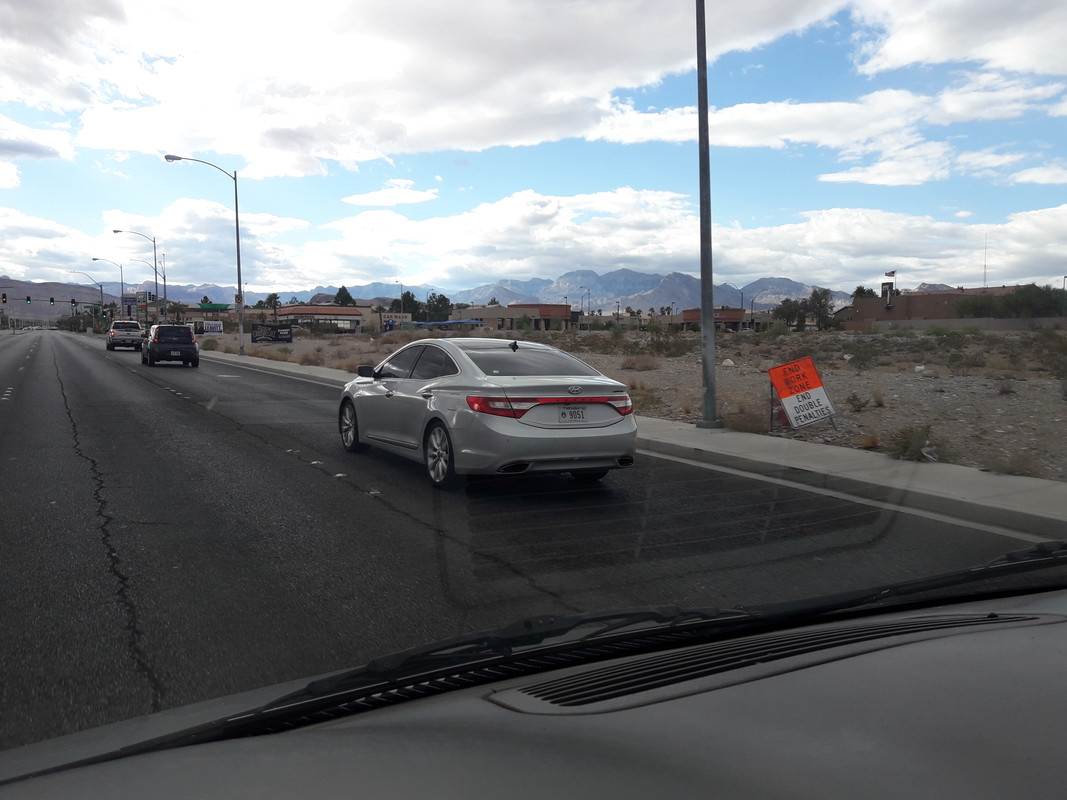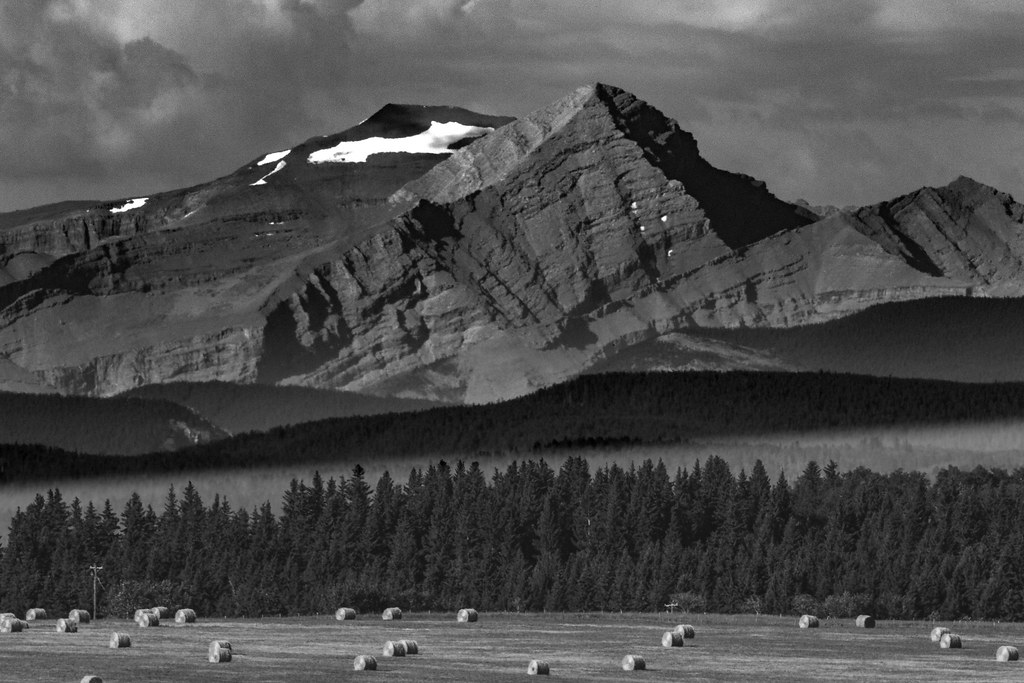misterjones
No longer a newbie, moving up!
- Joined
- Oct 13, 2010
- Messages
- 364
- Reaction score
- 873
- Location
- A2/Ypsilanti
- Can others edit my Photos
- Photos NOT OK to edit
8 years and 3 days after signing up and I finally get around to asking a question...
I've taken numerous pics all around Metro Phoenix and now Las Vegas (where I currently reside). One thing that has been most annoying happens when I'm out and, let's say, it's rained and the smog and whatnot have been cleared from the air and the mountain ranges surrounding both valleys become amazingly clear. Absolutely huge, stunning views and great detail are all visible with the naked eye, so I'll pull over to take a shot... Mostly I'll fire off a shot while sitting at a light to capture it and what ends up on my camera or phone isn't the spectacular sight I witnessed with my two eyes.
To give an example:
I took this pic with my phone a couple of weeks ago:

I usually keep at least a point-and-shoot in the car with me (Kodak C913), if not my bridge camera (Fujitfilm Finepix S4500) but for whatever reason I left the house without either, and really it probably wouldn't have made a difference since both would have taken pretty much the same pic.
Now, the mountains off in the distance were huge to the naked eye, towering well above the light pole directly next to the black Kia Soul but when I snapped the pic... well... you can see the result.
It should have looked similar to this:
http://urixblog.com/p/2014/2014.03.28LVa/picture-8.jpg
What I saw with my eyes looked closer to ^^^ that, especially considering I was actually closer to those specific mountain ranges (Red Rock, Bridge Mt, White Rock Hills, and Mt Wilson) that the individual that took that pic was (I would have been on the other side of The Strip, realistically only a few miles away from the edge of Las Vegas right before you get to those mountains).
This also happens when I take pics of the moon as it rises over Sunrise Mountains. We've has some absolutely spectacular moon views, utterly huuuge on the horizon, but when you snap a pic it looks far away and small.
Any help would be greatly appreciated.
I've taken numerous pics all around Metro Phoenix and now Las Vegas (where I currently reside). One thing that has been most annoying happens when I'm out and, let's say, it's rained and the smog and whatnot have been cleared from the air and the mountain ranges surrounding both valleys become amazingly clear. Absolutely huge, stunning views and great detail are all visible with the naked eye, so I'll pull over to take a shot... Mostly I'll fire off a shot while sitting at a light to capture it and what ends up on my camera or phone isn't the spectacular sight I witnessed with my two eyes.
To give an example:
I took this pic with my phone a couple of weeks ago:

I usually keep at least a point-and-shoot in the car with me (Kodak C913), if not my bridge camera (Fujitfilm Finepix S4500) but for whatever reason I left the house without either, and really it probably wouldn't have made a difference since both would have taken pretty much the same pic.
Now, the mountains off in the distance were huge to the naked eye, towering well above the light pole directly next to the black Kia Soul but when I snapped the pic... well... you can see the result.
It should have looked similar to this:
http://urixblog.com/p/2014/2014.03.28LVa/picture-8.jpg
What I saw with my eyes looked closer to ^^^ that, especially considering I was actually closer to those specific mountain ranges (Red Rock, Bridge Mt, White Rock Hills, and Mt Wilson) that the individual that took that pic was (I would have been on the other side of The Strip, realistically only a few miles away from the edge of Las Vegas right before you get to those mountains).
This also happens when I take pics of the moon as it rises over Sunrise Mountains. We've has some absolutely spectacular moon views, utterly huuuge on the horizon, but when you snap a pic it looks far away and small.
Any help would be greatly appreciated.
Last edited:

 mountain
mountain

![[No title]](/data/xfmg/thumbnail/35/35968-01893eeb6a205c00827118fe5bb79703.jpg?1734167851)




![[No title]](/data/xfmg/thumbnail/32/32936-e1ef9b5cfbe2ae3e2dbd817af60d390d.jpg?1734162736)





